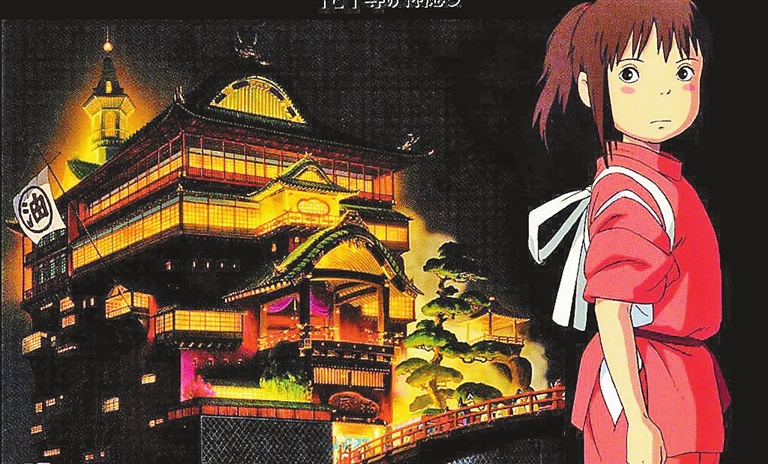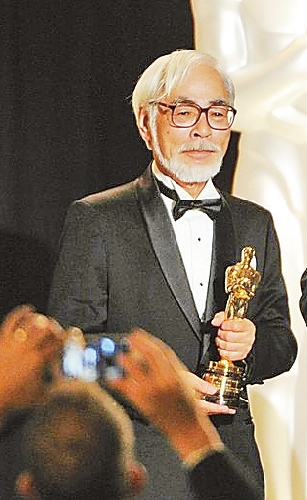

JAPANESE animated film “Spirited Away” is becoming a huge box office success on the Chinese mainland 18 years after its original release in Japan, drawing in a legion of nostalgic moviegoers who once watched the film from nonofficial sources. The Hayao Miyazaki-directed film took 192.7 million yuan (US$28 million) after three days of screening, more than doubling the 90.7 million yuan of runner-up Disney/Pixar’s “Toy Story 4,” according to the China Movie Data Information Network. Both films debuted on the mainland last Friday. The Oscar-winning fantasy film tells the coming-of-age story of a young girl — Chihiro — who ventures into a spirit world to save her parents, who have been turned into pigs. Many Chinese had already seen the film on DVD or from online sources, but that did not stop them from returning to the cinema to pay their “overdue tickets,” as alleged by many netizens. A manager of a Capital Cinema branch in Beijing observed that the films’ patrons were mostly those in their 20s and 30s seeking to revive their childhood memories, and some also brought their children. “The cinema screened this film over 20 times a day during the weekend to meet the huge demand. More than 90 percent of the seats were booked,” the manager said. Zhao Xiaoyu, a resident from East China’s Shandong Province, said she rushed to the cinema after work last Friday and stayed in the seat even after the end song started to play. “I was immediately transported back to the time when my college roommates and I sat before the only computer in the dormitory to watch the film 15 years ago. I remembered it took a long time to download the movie because of the slow network,” she said. Similar nostalgic reviews are abundant on China’s cyberspace. On popular microblogging site Sina Weibo, the topic “Spirited Away” has been viewed 260 million times. “I watched it by VCD at the age of 6 and have since wished to see it in the cinema,” said a Weibo user. “This movie accompanied me as I grew up. I will surely go to the theater to pay tribute to my youth,” commented another netizen. Return to cinema Miyazaki, the film’s director and a leading animator in Japan, boasts a sizable following among China’s young generations. “Spirited Away,” which scores 9.3 out of 10 on China’s major film rating platform Douban, is deemed a masterpiece. Lu Jianing, associate professor with the School of Theater, Film and Television at the Communication University of China, said Japanese animated films including the works of Miyazaki attract several generations of Chinese born between 1970 and 2010. “People who once watched Miyazaki films via DVD or Internet are returning to the cinema, which contributed to the booming box office,” Lu said. China began to introduce Japanese animation in the late 1970s, but it was not until after the turn of the century that many Chinese youth were familiarized with the genre, thanks to the popularity of cassettes, DVDs and the Internet. Wang Yuhui, a film Ph.D. student from Hokkaido University, said many Chinese born in the 1980s and 1990s harbored a nostalgic feeling toward Japanese anime that figured prominently in their childhood. “Spirited Away” is not the first Japanese movie to draw success from China’s nostalgic moviegoers. In 2015, Japanese 3-D animated film “Stand by Me Doraemon,” narrating a poignant parting with the household cartoon character Doraemon, became the then top-grossing Japanese film in China with a box office of 530 million yuan. Late last year, “My Neighbor Totoro” became the first Miyazaki film to hit the Chinese mainland screens, 30 years after its Japan debut in 1988, and generated over 170 million yuan in box office. According to a report released at the just-concluded Shanghai International Film Festival, China introduced a record 118 films from 18 countries in 2018, marking a yearly increase of 24 percent. The majority were the U.S. productions, which were followed by Japanese films, it said. Liu Jia, the main author of the report, said Hollywood movies and films from other countries are blossoming in the more diversified Chinese film market and are offering more choices to Chinese audiences. (Xinhua) | 
